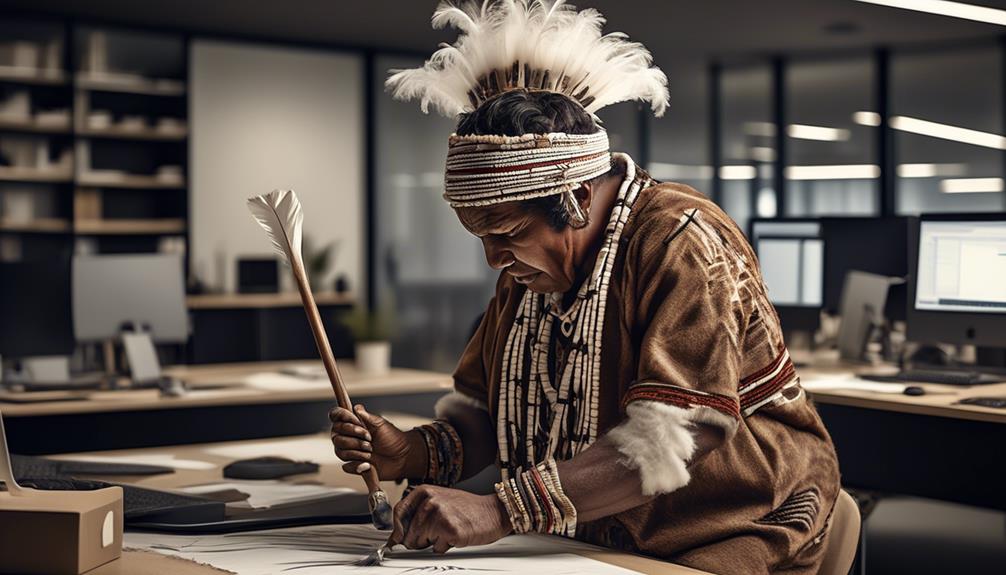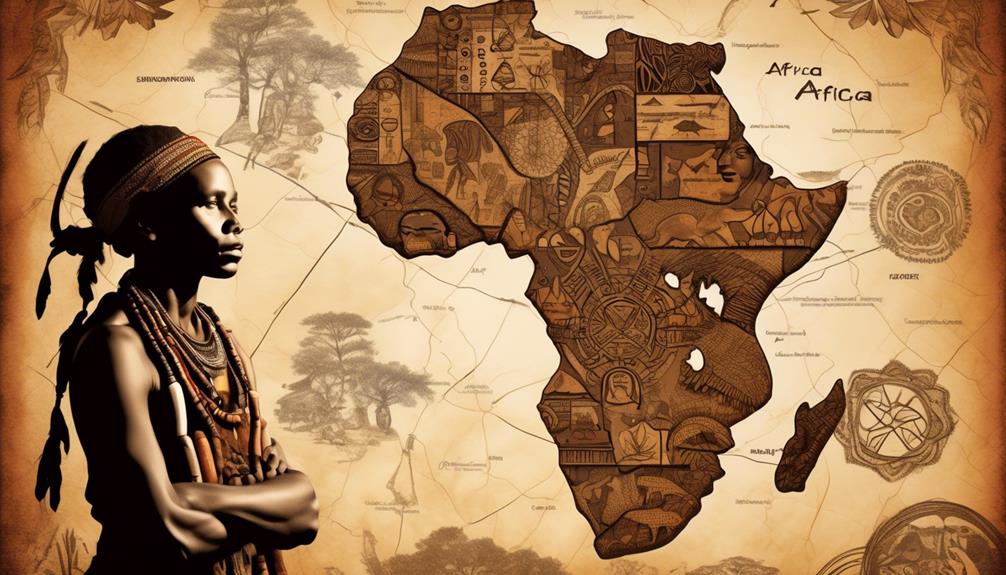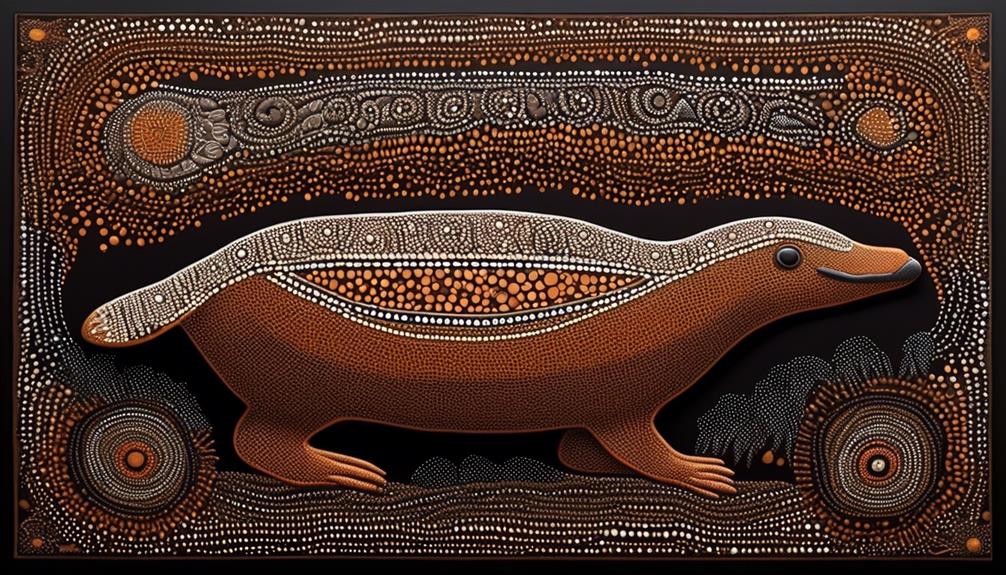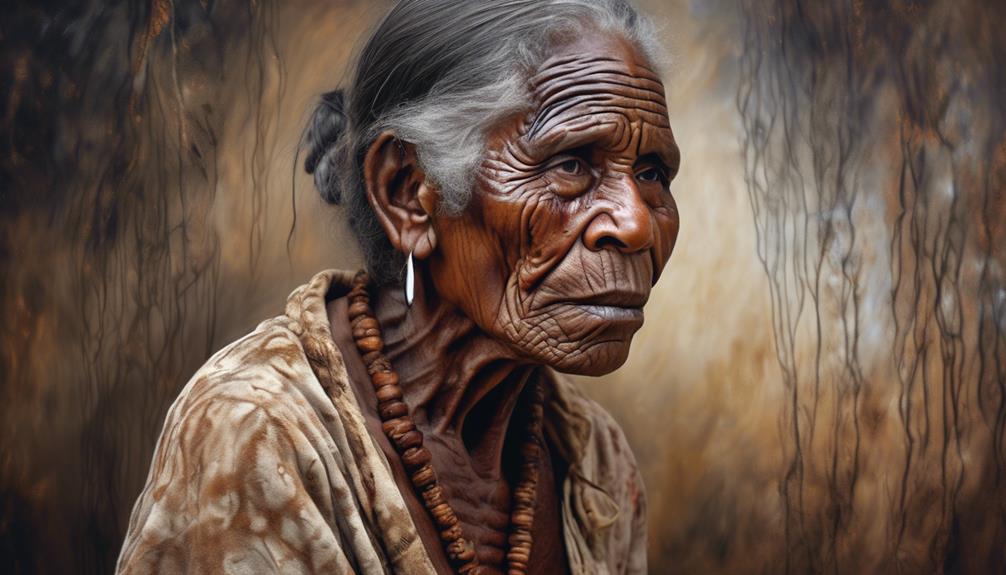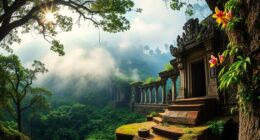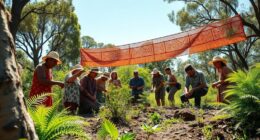It is common to question why ochre, a pigment found in various regions worldwide, is deemed special to Aboriginal people. The reason behind this lies in the significant cultural and spiritual importance ochre holds for Aboriginal communities.
Its use is not just about the physical material, but about the stories, traditions, and connections to the land that make it uniquely Aboriginal.
As you consider the question of whether ochre is Aboriginal, you'll find that the answer delves into the complexities of cultural ownership, historical context, and ongoing debates within the Indigenous community.
Key Takeaways
- Ochre is one of the earliest prehistoric pigments used by humans, particularly by Aboriginal peoples.
- Ochre holds deep significance in Aboriginal culture, symbolizing the earth and being used in rituals, ceremonies, and art forms.
- The commercialization of ochre raises concerns about cultural appropriation and exploitation, highlighting the need for ethical trade and cultural preservation.
- Recognizing the cultural ownership of ochre is crucial for respecting and preserving Indigenous traditions.
Origins of Ochre
The use of ochre in Aboriginal cultures dates back tens of thousands of years, playing a significant role in ceremonial, artistic, and practical applications.
Ochre is one of the earliest prehistoric pigments used by humans, and its significance in Aboriginal culture can't be overstated.
The origins of ochre can be traced back to natural pigments found in the earth, such as iron oxide, which were used by Aboriginal peoples for a variety of purposes.
These natural pigments were collected from different sources and then ground into powder, creating a rich palette of colors ranging from yellow and red to brown and even purple.
This ancient practice of utilizing ochre for artistic expression and ceremonial rituals highlights the deep connection Aboriginal peoples have with the land and their understanding of the natural resources available to them.
The use of ochre not only showcases the artistic talents of Aboriginal cultures but also reflects their deep understanding of the environment and its offerings.
Significance in Aboriginal Culture
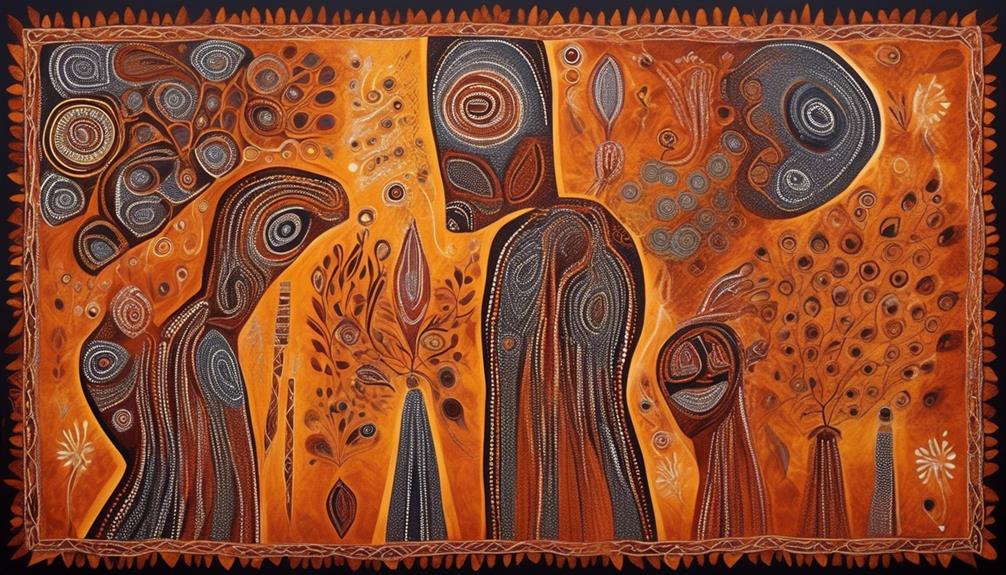
Playing a crucial role in ceremonial, artistic, and practical applications, ochre holds deep significance in Aboriginal culture, reflecting the profound connection between the people and their natural surroundings. Symbolically, ochre represents the earth, with its red, yellow, and brown hues mirroring the colors of the land. Its symbolic importance is evident in rituals and ceremonies, where it's used to paint the body, the ground, and sacred objects. This symbolic use of ochre signifies the connection to the land, ancestors, and the Dreamtime, illustrating a spiritual and cultural link that's fundamental to Aboriginal identity.
Furthermore, ochre plays a central role in artistic expression, being used in traditional painting, rock art, and storytelling. The application of ochre in these artistic forms serves as a visual language, communicating stories, traditions, and spiritual beliefs. The use of ochre in art also reinforces the connection to the land and the preservation of cultural heritage. Through its use in artistic expression, ochre becomes a medium through which Aboriginal people maintain their traditions and pass down their knowledge to future generations. This artistic significance highlights the enduring cultural value of ochre in Aboriginal communities.
Traditional Uses of Ochre
Frequently used in traditional ceremonies and rituals, ochre holds a significant role in the cultural practices of Aboriginal communities. Aboriginal art often incorporates ochre, with its rich earthy tones, for creating intricate designs on various surfaces.
The traditional uses of ochre extend beyond visual art to encompass body painting, a practice deeply rooted in Aboriginal culture. The application of ochre in body painting serves ceremonial and symbolic purposes, with specific colors and patterns holding distinct meanings. For instance, red ochre may symbolize the earth or bloodline, while yellow ochre may represent the sun or fertility.
The intricate designs painted using ochre on the body serve as a form of storytelling, expressing spiritual connections, lineage, and cultural heritage. Additionally, ochre is utilized in rituals such as initiations, dances, and corroborees, where it's applied to the body to connect individuals with their ancestors and the land.
The traditional uses of ochre in Aboriginal culture highlight its integral role in conveying and preserving cultural narratives, spiritual beliefs, and social structures.
Ongoing Debates and Controversies
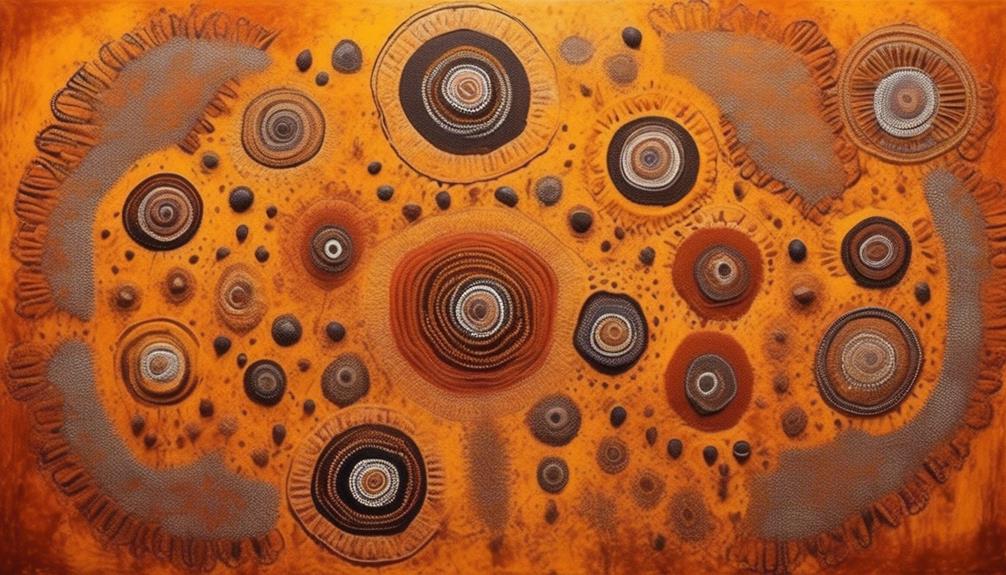
Amidst the cultural significance and traditional uses of ochre, ongoing debates and controversies persist regarding its appropriation and commercialization. One of the main points of contention revolves around the controversial origins of ochre. Some argue that the commercialization of ochre, particularly when marketed as 'Aboriginal ochre', perpetuates cultural appropriation and exploitation. This raises questions about fair compensation and recognition of Indigenous knowledge and cultural heritage.
The debate over the commercialization of ochre also touches on issues of authenticity and ethical sourcing. As demand for ochre-based products grows, concerns about the commodification of Indigenous cultural practices and the potential dilution of their sacred significance have come to the forefront. This has sparked discussions about the appropriate ways to engage with ochre within the commercial sphere, respecting its cultural and spiritual importance to Aboriginal communities.
Furthermore, the ongoing debates and controversies surrounding ochre reflect broader conversations about Indigenous rights, ethical trade, and cultural preservation. As society grapples with these complex issues, finding a balance between honoring the cultural significance of ochre and preventing its exploitation remains a critical challenge.
Cultural Ownership of Ochre
Exploring the cultural ownership of ochre reveals the intricate connections between Indigenous communities and this revered natural pigment. Ochre holds profound cultural significance for Indigenous peoples around the world. Its use spans countless generations, deeply embedded in indigenous traditions and rituals.
Here's why cultural ownership of ochre is a topic of great importance:
- Cultural Significance: Ochre isn't merely a pigment; it holds deep cultural and spiritual significance for Indigenous communities. Its use is intertwined with sacred ceremonies, storytelling, and art, making it an integral part of indigenous identity and heritage.
- Indigenous Traditions: The ownership of ochre is closely tied to Indigenous traditions, as it has been used for millennia in rituals, body painting, and rock art. Understanding the cultural ownership of ochre requires delving into the traditions, customs, and beliefs of different Indigenous groups, each with their unique relationship to this pigment.
- Respect and Recognition: Acknowledging the cultural ownership of ochre is crucial for respecting and preserving Indigenous traditions. It prompts a reevaluation of how ochre is sourced, used, and traded, fostering a deeper understanding of its cultural significance and the importance of honoring Indigenous knowledge and practices.
Frequently Asked Questions
How Is Ochre Used in Modern Aboriginal Art and Cultural Practices?
In modern Aboriginal art and cultural practices, ochre is used to depict deep symbolism and Indigenous creativity. The vibrant colors of ochre carry cultural significance and are utilized in storytelling, ceremonies, and art creation.
Its application is a testament to the enduring traditions and connection to the land. Ochre holds a central place in Aboriginal culture, representing a profound link to heritage and spirituality, demonstrating the enduring importance of tradition in contemporary Aboriginal art.
What Are the Environmental Impacts of Ochre Mining and Extraction?
Like a river carving through the earth, ochre mining leaves a lasting impact on the environment. The extraction process can disturb ecosystems, alter landscapes, and affect water quality.
These environmental impacts raise important questions about Indigenous rights and sustainable practices. Balancing the preservation of cultural traditions with the need for environmental stewardship is crucial.
Understanding the complexities of ochre mining is essential for fostering respectful and sustainable practices.
Are There Any Health or Safety Concerns Associated With Handling Ochre?
When handling ochre, there are health and safety concerns to consider. Ochre sourcing can lead to contamination with harmful substances, posing risks to those handling it. Proper preservation and disposal methods are essential to mitigate these risks.
It's crucial to be aware of potential health hazards and take necessary precautions to ensure safe handling and usage of ochre. Understanding these concerns is vital for minimizing health and safety risks associated with ochre.
How Has the Commercialization of Ochre Impacted Aboriginal Communities?
The commercialization of ochre has had a significant impact on Aboriginal communities. The economy has been affected, with traditional ochre gathering and trading practices disrupted. Cultural appropriation has also been a concern, with non-Indigenous individuals profiting from Indigenous knowledge and traditions.
These changes have brought about a shift in power dynamics and have led to ongoing discussions about the ethical and economic implications of commercializing ochre within Aboriginal communities.
What Are Some Lesser-Known Traditional Uses of Ochre in Aboriginal Culture?
In traditional ceremonies, ochre holds deep cultural significance for Aboriginal communities. It's not just a pigment; it's a symbol of connection to the land, ancestors, and spirituality.
Lesser-known uses include body painting for rituals, storytelling, and dance. Ochre's earthy tones evoke a sense of history and tradition, enriching the spiritual and cultural experiences.
Its application in these ceremonies reflects the enduring importance of ochre in Aboriginal culture.
Conclusion
In conclusion, ochre holds a deeply significant place in Aboriginal culture. It serves as a symbol of tradition and connection to the land. Its origins and traditional uses continue to be debated, but one thing is certain: the cultural ownership of ochre is as vital as the air you breathe. Its value to the Aboriginal people is as vast as the outback, and its significance can't be overstated.

